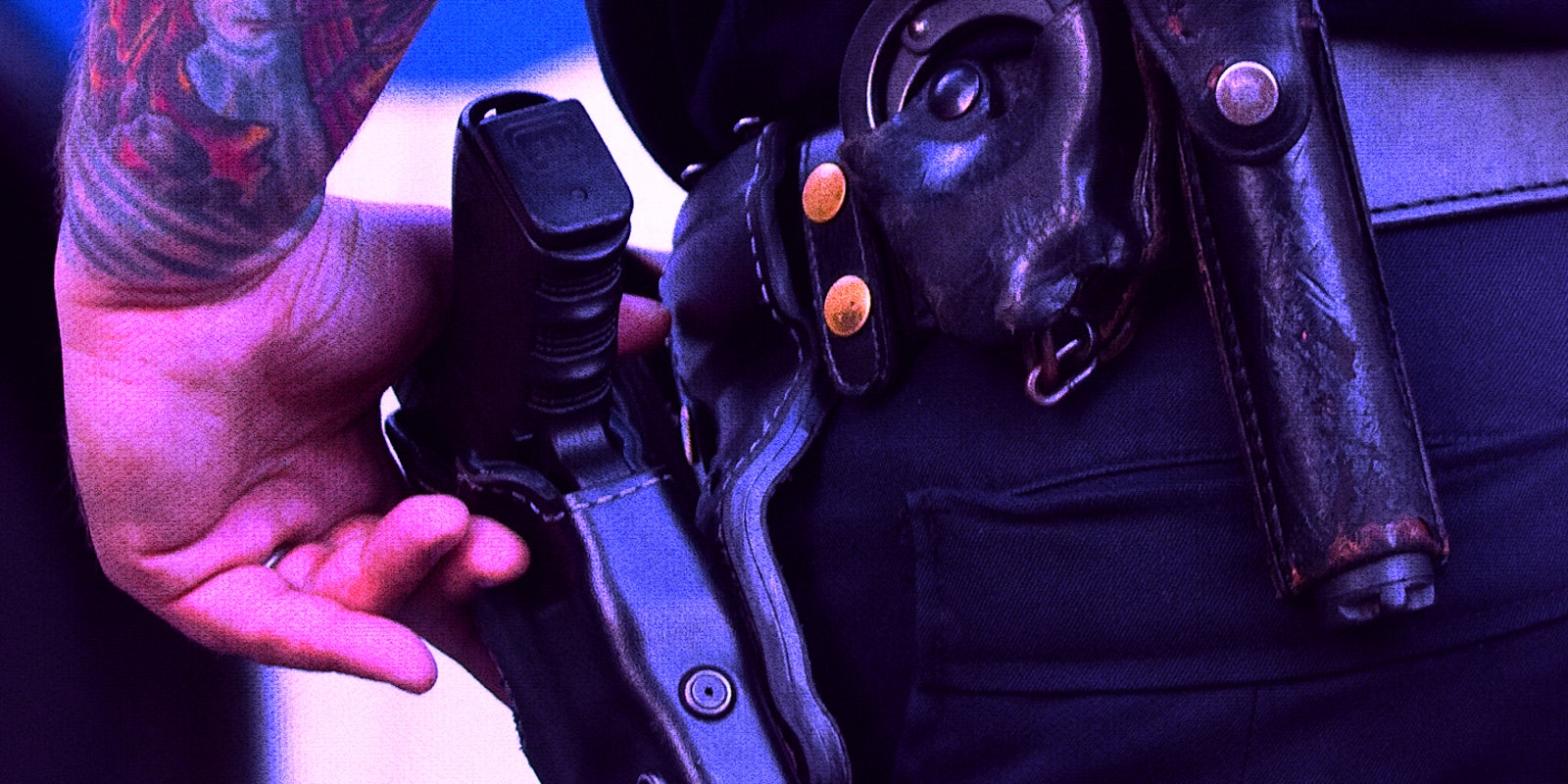Throughout the cascade of horror stories of cops killing people with uncaring glee or cold calculation, it is clear a poisonous culture is present in police departments across the country. The consistent mistreatment of perpetrators—even when it doesn’t result in a death—highlights a lack of either motivation for police to connect with their communities or the proper training on how to do so.
While certainly far from true of most officers, law enforcement in this country has a problem teaching police how to treat people like they are human.
The consequences of this neglect are largely and disproportionately felt by black communities, but they extend into other margins of society, as well. There also exists a lengthy and storied history of how police handle the mentally ill, including children with developmental disabilities.
Earlier this week, five-year-old Connor Ruiz was handcuffed and shackled by New York State Police officers for being “combative” and “out of control” during his special needs class. Although the restraints might seem extreme, Connor’s treatment is actually in line with policing attitudes toward the mentally ill.
One of the great crimes of our criminal justice system is the degree to which it has supplanted the mental health system. According to a report from the Bureau of Justice Statistics, two-thirds of male inmates and three-quarters of female inmates suffer from a mental illness. In fact, the mentally ill population in prison is 10 times greater than that in hospitals.
Before police can put them behind bars for a disability, however, mentally ill people also face a far higher chance of being shot by police. Half of all people shot by police are mentally ill.
Before police can put them behind bars for a disability, however, mentally ill people also face a far higher chance of being shot by police—half of all people shot by police are mentally ill.
For many officers, this might mean bringing themselves down to reality first. Starting last February, NYPD officers have been attending day-long seminars on how to handle tense situations. Although the tactic has been criticized by some officers for presenting its own risks, the seminars reportedly suggest officers close their eyes, take a few breaths, then make a decision.
The attempt to calm officers before they act has been criticized by some officers as a “criminally negligent” move that could put officers in danger. “Learning self-calming and relaxation techniques should be part of every officer’s training,” said one retired blue blood. “But not for use on the front line.”
The battle stance of an officer fearing for his life is often the last thing a mentally ill person encountering a breakdown needs in order to prevent a violent backlash. In Colorado, most police officers have gone through Crisis Intervention Team training which instructs officers “in the recognition of mental illness, to enhance their verbal crisis de-escalation skills, and to provide more streamlined access to community-based mental health services.”
After a decade of implementing the program, Colorado saw a significant decrease in SWAT team deployment and a decrease in the mentally ill people put in prisons. The program benefits officers as well—officers trained in CIT are 80 percent less likely to suffer an injury from a suspect. As one Colorado sheriff put it, “barking orders at a person with serious mental illness doesn’t work.”
The lack of acceptance among some officers for this basic truth—even in the face of recorded success from programs like CIT—is clearly rooted in a deeper paranoia officers feel about the people they’re tasked with protecting and serving. Despite a nationwide decrease in the number of officers killed in the line of duty, police departments are demanding increased privacy and protection from supposed backlash.
Earlier this year, a collection of police chiefs demanded the Google-owned traffic app Waze remove a feature allowing users to report where and when they see a squad car citing concerns they could be stalked. Last month, Arizona state legislatures passed a bill forcing police departments to hide the identity of an officer after the officer in question had been part of a violent or controversial incident to settle similar concerns of reprisal.
So it’s clear many officers trust their communities even less than many communities trust their police. This toxic environment breeds an antagonistic atmosphere between officers and citizens, one that does not bode well for mentally ill perpetrators who might already struggle to deal with social cues.
One of the disorders most affected by a stance taken by police is autism. According to an FBI report, autistic persons are seven times as likely to have interactions with police than the general population and, as any parent of an autistic child can tell you, do not typically respond well to apparent threats or aggression.
So it’s clear many officers trust their communities even less than many communities trust their police.
Clearly, Ruiz is the victim of such force-first thinking. So was Anthony Hill, a 27-year-old Atlanta man suffering from bipolar disorder, who was shot to death by an officer while wandering naked around his apartment complex. So was Jason Harrison, a schizophrenia patient shot dead by police officers after he refused to drop a screwdriver.
Last month, the Supreme Court heard arguments over whether police stations needed to implement programs that consider how to help the mentally ill in the same way libraries and post offices must have wheelchair ramps. Doing so might force officers to consider how to bring a situation down without pulling out their firearms. As is the case with so many reforms police officers fight, it’s good for them and the people they’ve sworn to protect, too.
Gillian Branstetter is a social commentator with a focus on the intersection of technology, security, and politics. Her work has appeared in the Washington Post, Business Insider, Salon, the Week, and xoJane. She attended Pennsylvania State University. Follow her on Twitter @GillBranstetter.
Photo via Eneas De Troya/Flickr (CC BY 2.0) | Remix by Max Fleishman


